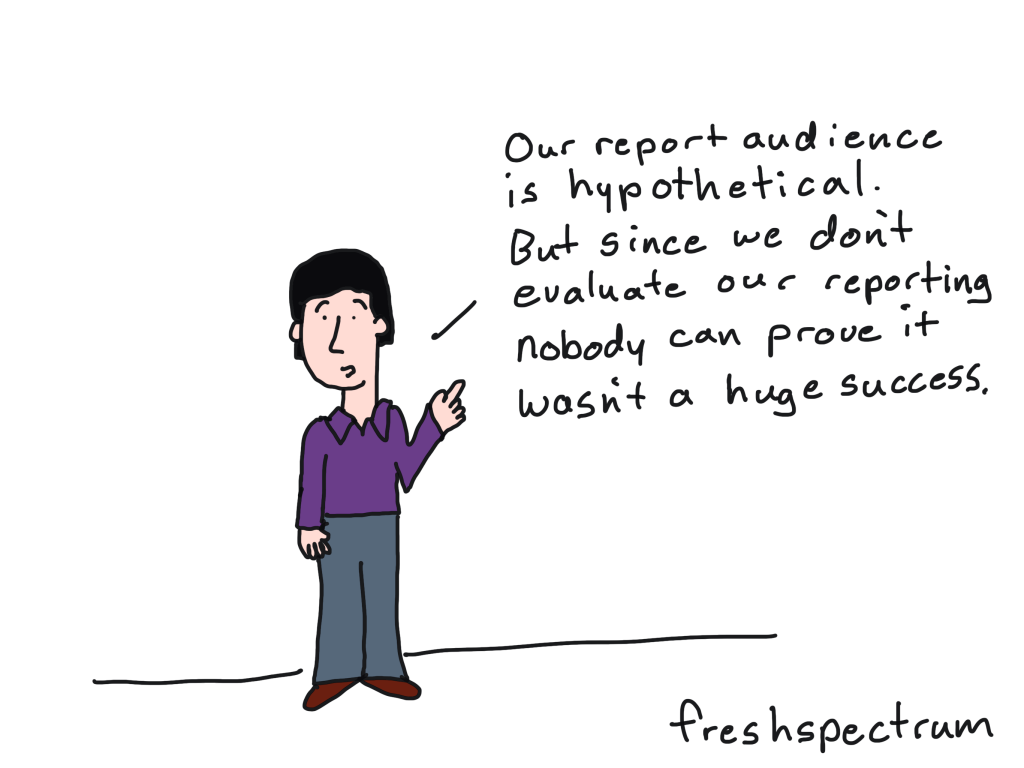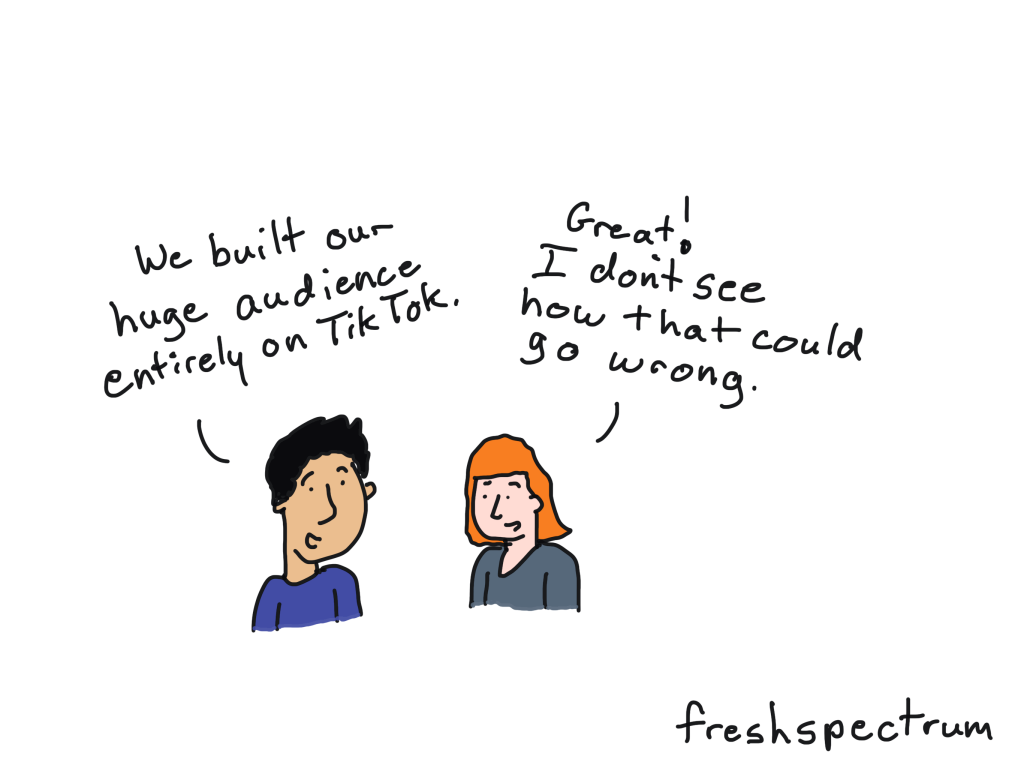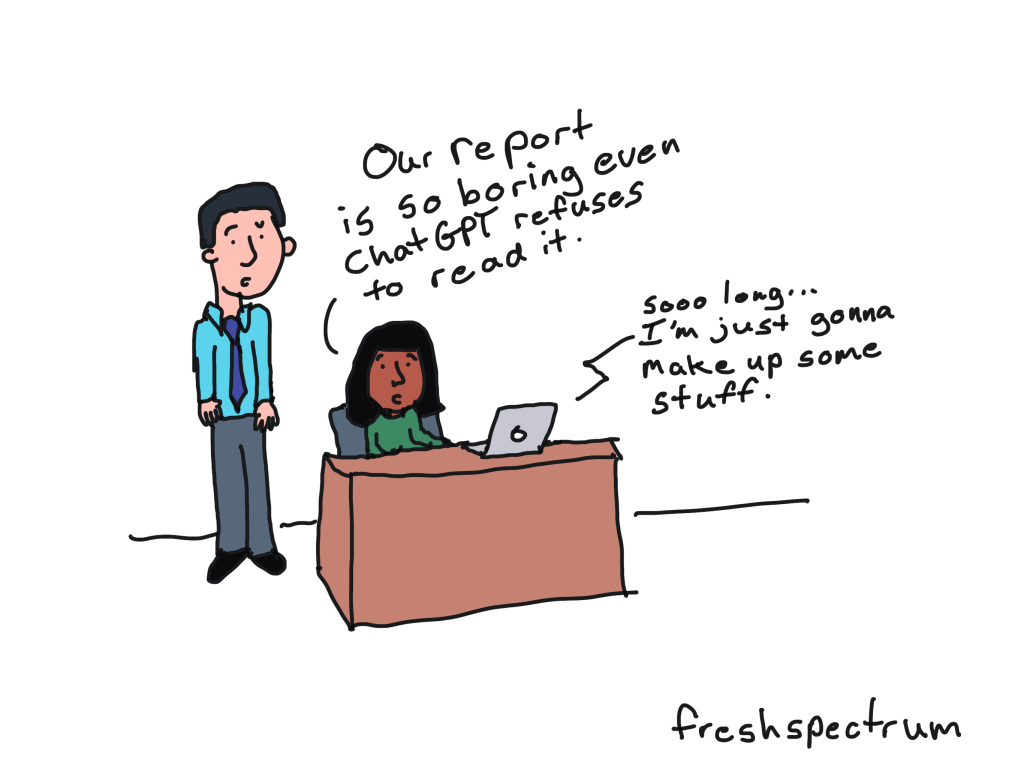This is an Eval Central archive copy, find the original at freshspectrum.com.
Time for another report design mindset change.
At the most basic level successful communication requires a sender, a message, and a receiver. You, as the report designer, are the sender. The report carries the message. So who is the receiver?
For a lot of organizations the receiver is hypothetical. At least for those wishing to reach outside of their immediate stakeholder groups towards a broader audience. But even when defined, this broader audience is often just a hodgepodge of different personas, not actual people.
As any person with an online business will tell you, reaching an audience isn’t as simple as posting to social media. To be successful, you need to put in work to actually build your audience.
And if you actually want your report to successfully reach a broader audience, you need to do the same.

Email beats social media.
When organizations do put in effort to build an audience, they usually start with social media. Like us on Facebook. Connect with us on LinkedIn. Follow us on Twitter.
But social media is unreliable for a few reasons.
1. Very few of your posts will likely be seen by your followers.
This has become increasingly true over time as what we see is guided by algorithms. These companies can control these algorithms and even shadow ban your content without your knowledge.
2. Most social media companies are for profit.
They prioritize money making over information sharing. This has become worse over the years, forcing many to feel the need to pay for attention even if they have established social media audiences.
3. Social media audiences do not carry over to other platforms.
So if you build a following on TikTok, and TikTok goes down, your following is gone. If your account gets hacked, and then suspended by the social media company, your following is gone. If your social media channel of choice gets purchased by an egomaniac who turns it into some kind of right wing propaganda tool, your following is gone.
But if you start building an email list, a higher percentage of your audience will see your messages when you send them. You can choose your email platform. You can also change your email platform and bring your audience with you.

Email beats search.
Search engines like Google, can deliver report audiences to your report. But it’s also pretty unreliable.
1. Search engine algorithms are a constantly changing blackbox.
Small changes can lead to a large disruption in your ability to reach audiences.
2. Most search engines are for profit.
Just like social media, they put advertising ahead of information sharing.
3. AI is completely changing the way search works.
AI search interprets your reporting in ways that could easily distort your messages. It can even outright lie about your findings or suggest false sources.
Email gives you the ability to reach an audience with your messaging in a way that gives you some level of control otherwise impossible through search.

How to build an audience for your reports.
Unfortunately, building an audience isn’t exactly easy. It takes work, usually through the implementation of a content strategy. It also takes some preparedness, as you should work towards building your audience well before sharing your report.
There are multiple ways to start collecting emails for the people with an interest in your reporting. Here are a few simple strategies you can use.
1. Setup a landing page with a direct invitation for those interested in following your reporting.
This landing page should ask for their contact information (email address).
Tip: this is an opportunity for audience input and feedback through the fields on the form.
2. Hold webinars.
Give presentations on your models, methods, or preliminary findings. People are used to registering for webinars and are willing to provide their email addresses. They are also often willing to opt-in to future updates on your reporting.
Tip: this is also an opportunity for direct audience input and feedback.
3. Write monthly updates in the form of blog posts.
This still requires a landing page to get email addresses but consistent updates can help you to cultivate and serve your reporting audience.
Tip: and yes, this is also an opportunity for audience input and feedback through comments.
Final thoughts.
I know very few evaluation teams that are actually putting in the work to build their report audiences. In larger organizations they might assume their comms team will already have access to these audiences. But this is a pretty big assumption.
The audiences organizations build through their communications strategy are not necessarily the same ones you would want to reach with your reports. Comms teams also often rely heavily on social media.
Are you building the audience for your reporting? If yes, please share in the comments and let us know how.